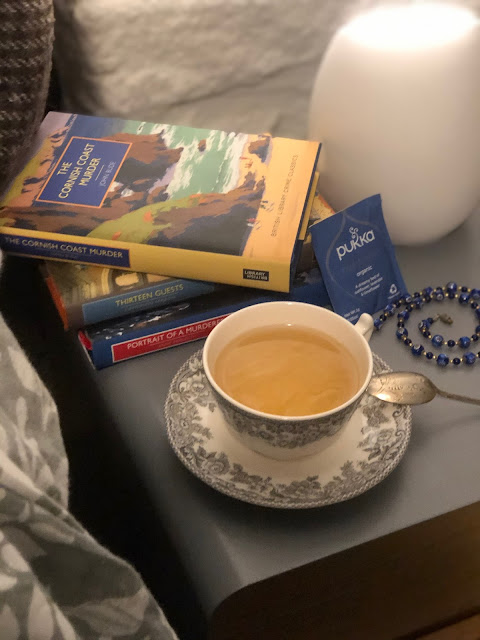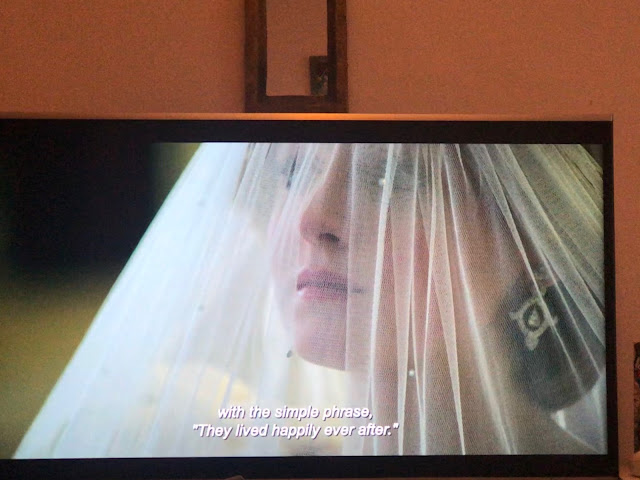"When you're thirteen, Daddy will teach you how to lay an enchantment. Just the one, and it will be yours, forever. That's traditional on the eyot. If someone turns out to be good at dollcraft - if they're better than everyone else - we apprentice them as a Sorcerer, and they can learn all the other enchantments. Do you see? Only the very best people at craft get to do it as a job. Only they get to learn all the enchantments".
Since early childhood Persephone's desire is to become a Sorcerer. Now she is an adult, but she is not making dolls, as she once imagined, "despite repeatedly requesting an apprenticeship. She is out front, "making sales, getting into trouble for being insufficiently cheerful with the customers".
Persephone is a compelling, determined heroine of The Thief on the Winged Horse by Kate Mascarenhas. It is not easy to define the genre of this novel in one word, as it is a mix of fantasy, magic realism, crime and feminist philosophy.
The Kendrick family have been making famous enchanted dolls since the early 1800s. Their craftsmanship is exquisite, and their magic abilities are coveted by the collectors around the world. Each doll has a unique specific emotion attached to it by the sorcerer. Touch the doll, and you will be affected by Heady Optimism or Bucolic Bliss or some other strong emotion.
The doll-making business has been founded by four sisters - Lucy, Rebecca, Sally and Jemima. The workshop continues to trade as a family business by the descendants of the sisters. In fact, only the family members are allowed in it. Despite being founded by women, this mini-world of dollmakers and sorcerers, is now ruled by men, while women are pushed to the lower echelons of crafts. The Kendricks' famous workrooms are the only source of magic dolls in this country or any other.
One autumnal day, a stranger enters the shop. He walks around, looking at the dolls. He touches them gently, drawing a new feeling from each one.
The young girl at the counter doesn't acknowledge him, she is scowling deeply. When she talks to the stranger, her tone is surly. She doesn't make a good sales assistant. As we later find out, Persephone resents her position. She is startled when the stranger requests a meeting with the head of the family, Conrad Kendrick. Larkin claims to be a descendant of one of the sisters, and thus wants to find a job in the workshop. The story sounds like a product of a fantasist, because Jemima Ramsay died in childbirth and didn't leave any offspring.
Hedwig Mayhew works for Conrad Kendrick as a domestic manager and representative. She is young, ego-driven and enjoys the power she has. "Her favourite responsibility was settling bills, because she liked imagining that she instead of Conrad, was immensely rich".
While waiting to be admitted to Conrad's office, Larkin sees the cage, where the most important doll of the family is displayed behind iron bars - the Paid Mourner. The doll was made in 1821 to mark the passing of Jemima. The doll is exquisite, but Hedwig doesn't share Larkin's admiration. "Only financial worth inspired her interest. Growing up on Paxton's Eyot ensured her grasp of trade information. The most important thing about the Paid Mourner was the market value. Pride in Kendricks' wealth made Hedwig booast; she whispered, gleefully: "She's worth two million pounds."
Larkin explains to Conrad why he wants to work for the family business, " To make people feel joy - and awe - and every other emotion your magic brings. No other doll maker can teach me that. The Kendricks Workshop is unique".
Conrad makes a decision to hire Larkin in a reduced capacity, even if just to keep a watchful eye on him. He will only be permitted to craft the dolls, not lay enchantments.
Persephone is resentful that the stranger to the family gets a place in the workshop. She has seen his work, and understands that he is very gifted. "With this proof of his ability, Persephone wished still more intensely that she were in his place. No, more than that; she wanted to be him. To have a vision, and to be permitted to realise it, was so enviable". She is watching Larkin and hopes that her fortunes will change as well.
Abandoned by her mother, Persephone lives with the alcoholic father Briar, who's abusive and has a strange hold on her. If she leaves him and the eyot, she will never be allowed to become who she wants to be.
Then, one night, when the family is holding an annual masked ball, their most valuable doll is stolen from the premises. Who could have taken it? Only someone who knows how to handle magic, and the fingers are pointing in one direction.
The magic is part of life of the small island community. Their belief in the fae world is strong. There is an old eyot superstition. "When we lose an object, we say it's been taken by the Thief; he's one of the fae folk, and he rides a winged horse. He only returns what we've lost when we offer something in exchange".
The Thief on the Winged Horse is a fascinating novel, with original characters and marvellous setting of the fictional island in Oxford with its isolated community and its insular ideas. This is the suffocating world where the parochial attitude to women and their subjugated role is so outdated. The history goes back to the four sisters who only had sons, so there were no women sorcerers in the next generation.
"Those men decided that their daughters should receive a hex, like the boys, for their own protection form the Thief, but fathers must act as intermediary in translating the symbol... Women never regained a proper foothold. Sorcery became men's work. That was the company line. The women who did break through were belittled".
Female empowerment is one of the themes of the book. We root for the socially inept Persephone to grow her own wings, through heart-break and self-discovery.
I especially enjoyed reading the descriptions of the doll-making techniques, varieties of materials, different ideas for dioramas and doll's houses.
I felt the ending was a bit rushed, and would have liked some of the plotlines to be explored more in-depth.
The Gothic, melancholic tones of the novel suit perfectly the darker late autumn and winter evenings.
Many thanks to Kate Mascarenhas and Head of Zeus for my limited edition proof.
This post is part of the blog tour.
P.S. In case you are wondering about the artwork around the book, I painted the Venetian Dolls series about 15-17 years ago. There were many more pieces in the series, all painted in black and red water colour with a brush (this is not an ink and pen work).
















































